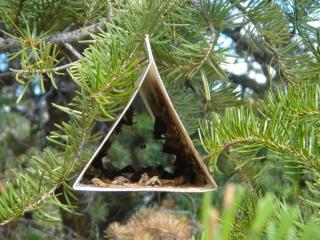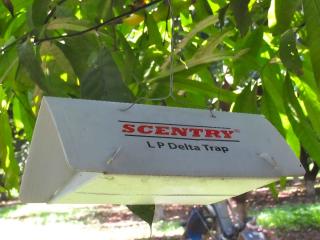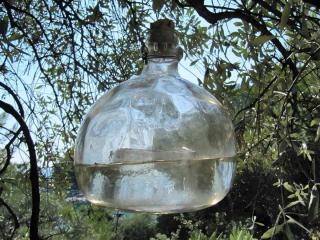

Biological control against pest insects is all the rage, and pheromone traps are proving to be effective and natural solutions. Previously, only professionals would use these traps. But they’re slowly are making their way into family gardens and orchards.
Note that a single trap can’t protect against all attacks. Here, you’ll read how and when to use these special kinds of traps.
Before understanding what a pheromone trap is, let’s dive back to our schoolday lessons. Remember what pheromones are? No? Here’s the answer: they are chemical molecular substances produced by animals, especially insects. In a word, “scents”. They essentially allow them to communicate and send messages to other individuals of their species.
For insects, key pheromones trigger interactions between males and females to enable mating and reproduction. Other pheromones are related to territory, while others still broadcast the presence of interesting food. Another set of scents transmit alert messages when danger lurks…
In biological control, the most effective lure are sexual pheromones. These are used in traps. In practice, the traps release fake, synthetic pheromones, that would normally be secreted by females during mating season to attract males . Males are therefore tricked and trapped instead of meeting up with females.
Without males, females can’t reproduce. For species with high reproduction rates, traps greatly reduce numbers for that generation. Furthermore, these traps allow gardeners to know when the breeding period begins and ends.

There are also chromatic traps, often yellow or blue. These two colors attract certain insects.

The only disadvantage they have is that they’re actually good at annihilating a pest species. Yes, you have to be a very zen gardener!
Indeed, one could argue that even insects who eat our fruits and young vegetable shoots are also useful and contribute to the great cycle of life. Other gardeners prefer to trust helper fauna by planting plants that attract birds, certain mammals like hedgehogs, or reptiles such as lizards.
There are different types of pheromone traps, specific to particular species. In general, it’s primarily butterfly (Lepidoptera) and fly (Diptera) that are targeted.

In the orchard or decorative garden, pheromone traps are hung in the heart of the tree, at a human’s height.
The number of traps needed varies. It is generally easy to compute from information on the packaging.
Herein lies the main difficulty! Indeed, when to install pheromone traps is entirely dependent on the breeding period of each insect. But, in general, they are set from the early months of spring, when the temperature is sufficiently warmed. It is indeed at this time that insects emerge from hibernation to fly.
For fruit trees, it is advised to wait until the end of blooming so as not to disturb pollination.
They should remain in place until the end of summer since some insects have multiple generations. Generally, pheromone capsules inserted into the traps work for 4 to 6 weeks. Therefore, plant to replace them after that span of time.
→ Also read:
I appreciate the depth of research evident in your article. It’s evident you put a lot of effort into crafting this piece.